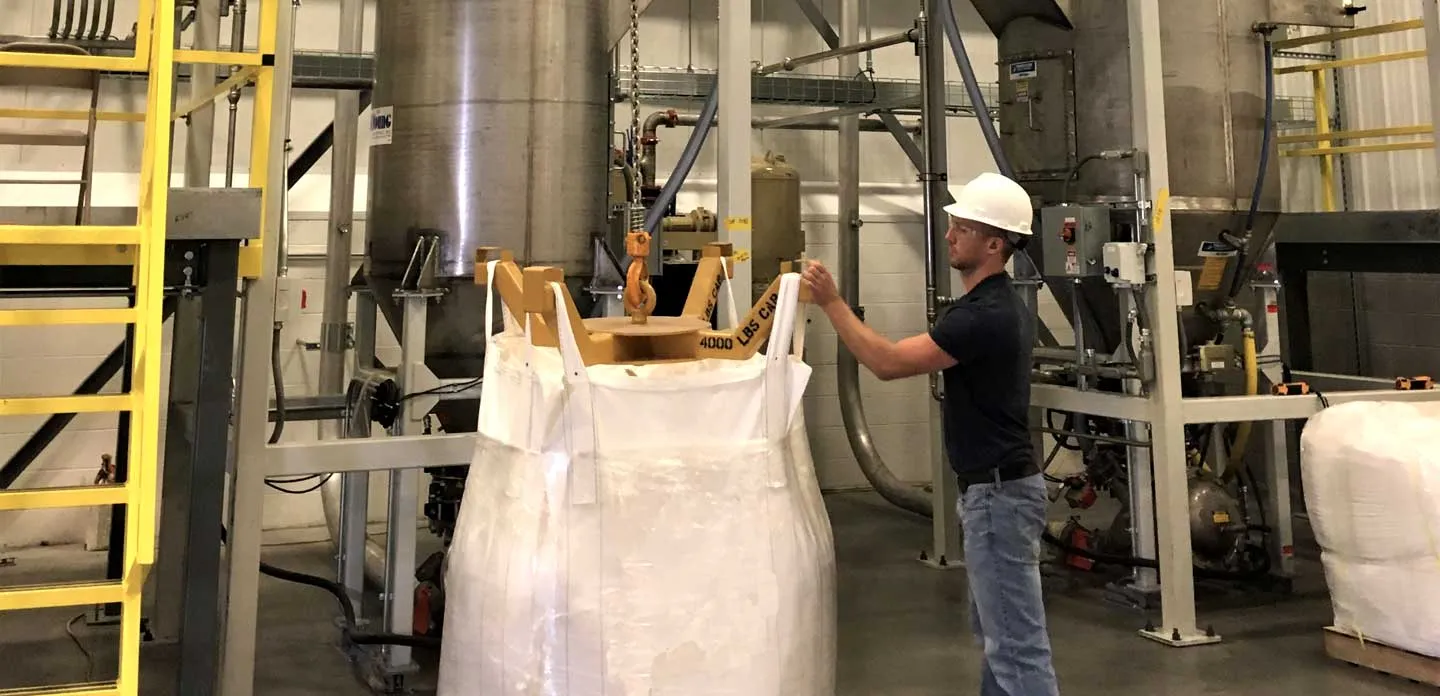Young Industries, Inc. is a manufacturer of custom-designed equipment for handling dry bulk materials in the chemical, petrochemical, ceramics, and coatings industries. The company has been manufacturing conveying systems and related components since 1947 and holds many patents for problem-solving equipment. Young Industries is certified by ASME (American Society of Mechanical Engineers) and the National Board of Boiler and Pressure Vessel Inspectors to manufacture pressure vessels as set forth by U, UM, and R regulations. The engineering staff is constantly evaluating better methods to develop, design, and manufacture equipment to solve customer needs.
An early adopter of 3D for developing engineered-to-order systems for its clients, Young Industries has utilized the SOLIDWORKS 3D applications platform for the past two decades, including SOLIDWORKS Professional design, SOLIDWORKS Simulation Professional analysis, and SOLIDWORKS PDM Professional product data management software. Although the majority of Young Industries’ design and engineering work is done in 3D using SOLIDWORKS software, including all new designs, the company still has needs that are better addressed with 2D tools, for which the company had, until recently, utilized MountainTop® 2D design software.
“There are certain tasks—modifying legacy drawings, creating simple layouts or sketches, or developing P&IDs (piping and instrumentation diagrams)—that we consider ‘quick and dirty,’ for which it’s faster and easier to use 2D,” explains Engineer Ryan Vandine. “We began using SOLIDWORKS 3D in the late 1990s, but continued running MountainTop 2D in conjunction with SOLIDWORKS until we ran into issues.”
According to Director of Information Technology J. Tyler Thompson, Young Industries decided to seek a new 2D design solution to replace MountainTop, which ran on a UNIX® terminal server, after encountering both hardware and software failures. “We simply ran out of time with MountainTop and decided to look for another 2D design solution,” Thompson recalls.
After evaluating available 2D design packages—including Solid Edge® 2D, AutoCAD® LT, and AutoCAD Mechanical Desktop®—Young Industries acquired the DraftSight® Enterprise 2D design solution from Dassault Systèmes. The company chose DraftSight Enterprise because it is easier to maintain and support, includes the features the company needs at a better price, and is the most compatible with the company’s SOLIDWORKS design environment. “DraftSight provides greater flexibility in licensing and directly integrates with our SOLIDWORKS PDM Professional product data management system,” Thompson says.
USING 2D WHEN IT MAKES SENSE SAVES TIME
In implementing DraftSight Enterprise, Young Industries is providing its engineers with the most suitable solutions for specific tasks. Although all of the large-assembly design of the company’s material-handling systems is done in SOLIDWORKS, there are other tasks for which 2D is preferred, such as bringing in DWG/DXF™ files from customers. “As long as the customer files that we’re dealing with aren’t 3D, it’s much easier to work with them in DraftSight,” Vandine stresses.
“DraftSight has simplified the process,” Vandine continues. “For example, on a project for which we merely need minor modifications to a MountainTop drawing, we bring the drawing into DraftSight as a DXF and can make the change quickly and easily. That takes about 15 minutes in DraftSight versus days of work remodeling the old drawing in SOLIDWORKS.”
“Anytime that we can eliminate the translation from 2D to 3D, we save time and effort,” adds Sales & Marketing Director Dick Ambs. “Where it makes sense, we want to leverage DraftSight.”
